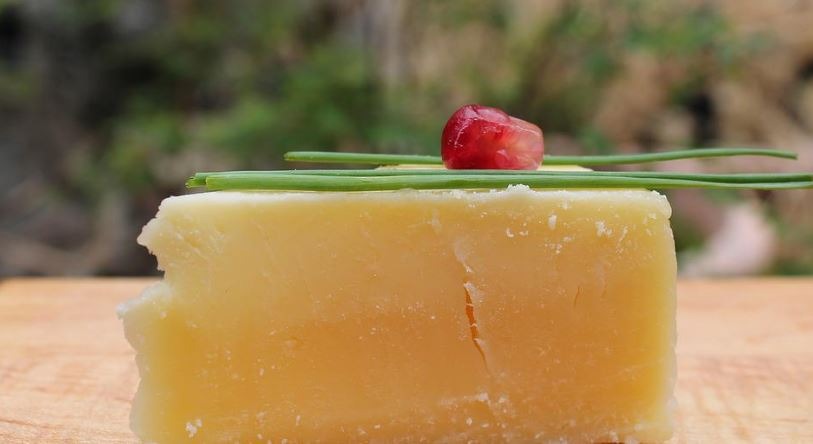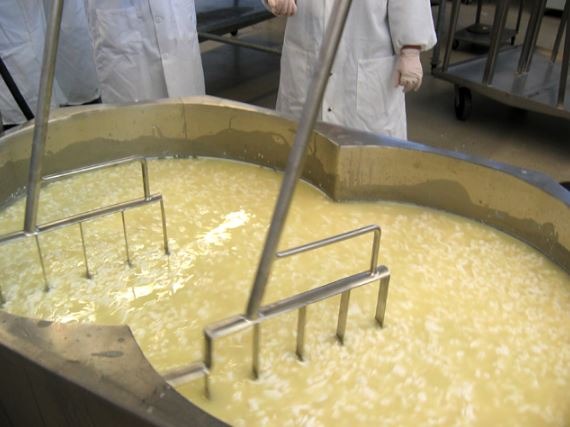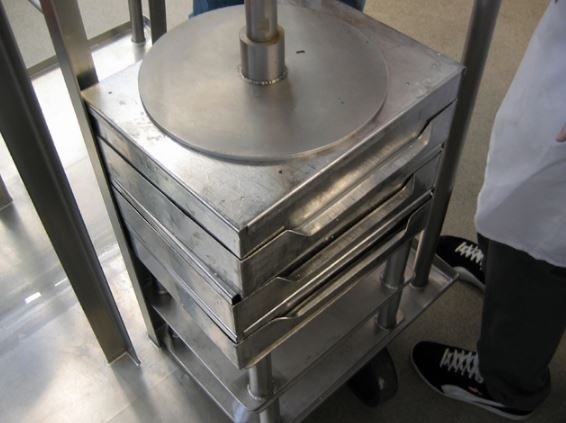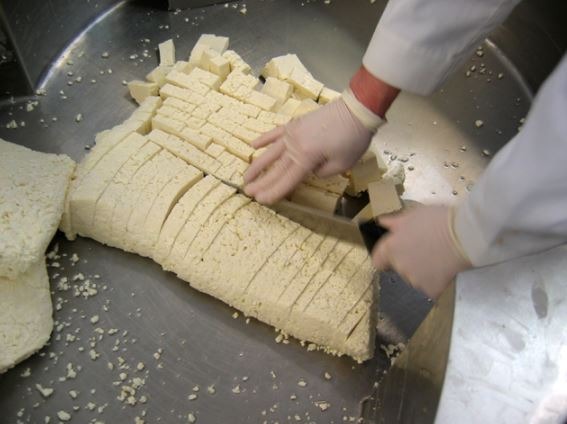Cheddar cheese, the most popular and widely consumed cheese globally, has always been made from cow’s milk. It’s a natural and hard cheese with a slightly crumbly texture if correctly cured and a smooth texture if too young. It becomes sharper in flavor as it matures over nine to 24 months.
Cheddar cheese, shaped like a drum and 15 inches in diameter, has a natural rind bound in cloth and a color ranging from white to pale yellow. Some Cheddars, on the other hand, may have a yellow-orange color added by hand.
Continue reading to learn what makes hard cheddar cheese and how to make it at home. And while you’re here, learn about the different types of Cheddar cheese too!
What Is the Difference Between Soft and Hard Cheese?
Unripened soft cheese is made by coagulating milk proteins (or casein) with acid. Cottage and cream cheeses are two examples.
Hard cheeses are aged cheeses that are ripened by coagulating milk proteins with culture acids and enzymes (rennet). Molds or bacteria ripen the cheeses. Examples of bacteria-ripened hard cheeses include Cheddar, Colby, Swiss, Parmesan, and brick. Mold-ripened cheeses include blue, Camembert, Roquefort, and Brie.
Because aging removes moisture from cheese, hard cheese is drier (and harder) than soft cheese. Bacteria cannot grow as easily in dry environments as in moist environments, so hard cheeses last longer than soft ones.
However, the distinctions between soft and hard cheeses are not always clear, particularly between semi-soft and semi-hard varieties. Furthermore, depending on the duration of the aging and the pressure with which the cheese is packed into molds, some cheeses can be made in firmer or softer formats.
Cheddaring
Everyone knows that Cheddar is a kind of cheese, but what exactly is cheddaring? Cheddaring is a cheesemaking procedure (check out this ultimate guide to cheesemaking kits!) that requires cheese to go through before being called Cheddar. Why? Cheddaring the cheese gives it a dense, layered texture.
What Happens During the Cheddaring Process?
Curds are cut into smaller pieces after forming during the cheesemaking procedure to expel liquid (whey). The more liquid drains from the curds, the smaller they are cut. The more liquid drained from the curds, the firmer the finished cheese.
This phase of cutting the curds is used to produce almost all cheese varieties, but it is taken a step further in the production of cheddar cheese.
The curds are cut up and pressed into slabs to make Cheddar. The curd slabs are stacked on top of one another. The weight of stacking the curd slabs on top of each other squeezes out even more moisture.
The curd slabs are cut up again, pressed into slabs, and stacked. This is called cheddaring. The process is repeated until so much whey is ejected that the cheese has a layered, crumbly, dense texture after aging.
Traditional Way of Making Cheddar Cheese
This recipe yields approximately 1 kg of cheese.
Ingredients
- 10 liters (10 quarts) of full cream milk (preferably unhomogenized/pasteurized)
- 1/8th tsp (dash) mesophilic culture MO30
- 2.5 ml (1/2tsp) liquid rennet in 1/4 cup of water
- 2.5 ml (1/2 tsp) calcium chloride in 1/4 cup of water
- 12 drops of annatto in 1/4 cup of water
- 1 & 1/2 tbsp cheese salt
- Lard, butter, or coconut oil for banding
- Loose weave cheesecloth
Equipment
- 165 mm cheese basket with follower
- Cheese press
- Cheese drying mat or bamboo mat
- Dairy thermometer
- Stirring spoon (stainless steel)
- Mini measuring spoons (for cultures)
Instructions
Adding Ingredients:
- Sanitize all of the equipment.
- Warm the milk to 31°C (88°F), gently stirring while it heats up. Remove from the heat.
- Allow the culture to rehydrate for five minutes on the surface of the milk. Stir meticulously in an up and down motion, being careful not to break the surface of the milk. Cover and set aside for 40 minutes at the desired temperature.
- Mix in the Annatto solution thoroughly.
- Mix in the calcium chloride solution thoroughly.
- Add the rennet solution to your milk and thoroughly mix for no more than two minutes using the same up and down motion. Cover and set aside for 40 minutes.
- Examine for a clean break. If necessary, wait another ten minutes before checking.
Cutting the Curd:
- Examine the curds for a clean break and cut them into 1.25 cm (12 inches) cubes.
- Take a five-minute break to allow the curds to heal.
- Revert to low heat and slowly raise the temperature to 39°C (102°F), stirring constantly and gently for 45 minutes. Don’t let it get too hot. This slow process expels more whey and prevents bitterness in the fully-aged cheese.
- Turn off the heat once the desired temperature has been reached. Allow the curds to rest for 40 minutes while keeping the temperature at 39°C (102°F).
Cheddaring, Milling, and Pressing:
- You should drain whey and curds through a cheesecloth-lined colander. Return the curd slab to the pot for cheddaring, then place the pot back into your double boiler to maintain the curd slab at 39°C (102°F).
- Cut the slab into half and place it on top of the pot. Allow the curds to sit for ten minutes.
- After ten minutes, flip each slab. Allow for another ten minutes to stand.
- Turn each slab over after another ten minutes. Let it stand for another ten minutes.
- Turn each slab over for another ten minutes. Allow for another 15 minutes to stand. That’s a total of 45 minutes of cheddaring time.
- Drain the two slabs in a cheesecloth-lined colander, then place them on a cutting board.
- Make 5 by 1.25 cm (2 by 12 inch) fingers out of the curd.
- Break each finger in half and chuck the salt through the curds using your pot as a container. This is known as milling.
- Fill a 165 mm cheese mold halfway with cheesecloth and the curds. Cover the curds with a cheesecloth corner, place a follower on top, and press at 11 kg (24 lbs) for one hour.
- Remove the cheese from your press and unwrap it slowly and carefully. Turn the cheese around, rewrap it in the cloth, and press it for 12 hours at 22 kg (50 lb).
Air Drying and Waxing:
- Place on a cheese board and mat to dry at room temperature until dry to the touch (usually 2-5 days). Turn twice daily to ensure even drying.
- Wrap the cheese in wax or cloth and leave it to age for three months for mild, six months for tasty, and 12 months or more for vintage Cheddar. Ripen inside a humid cheese fridge at 10-12ºC (50-54ºF) and 80-85% humidity for 10-12 hours. Don’t forget to turn it once a week to ensure evenly distributed flavor and fats.




